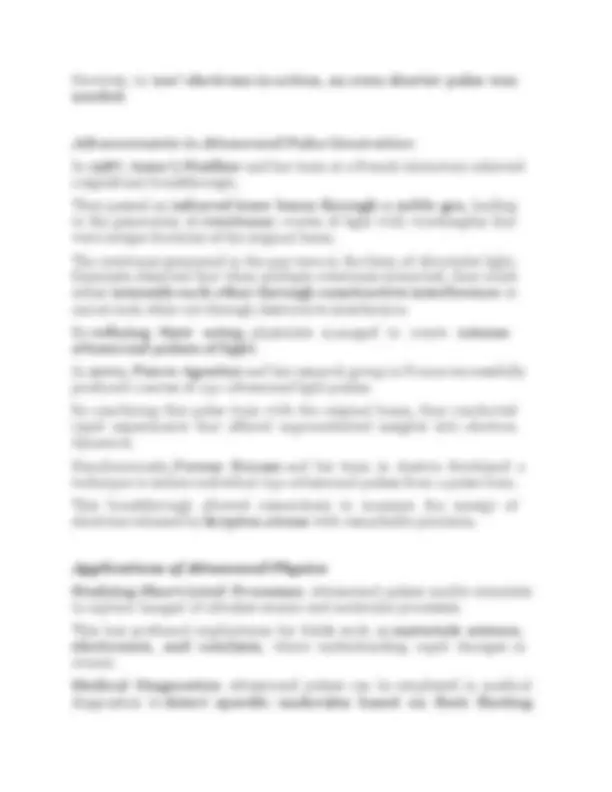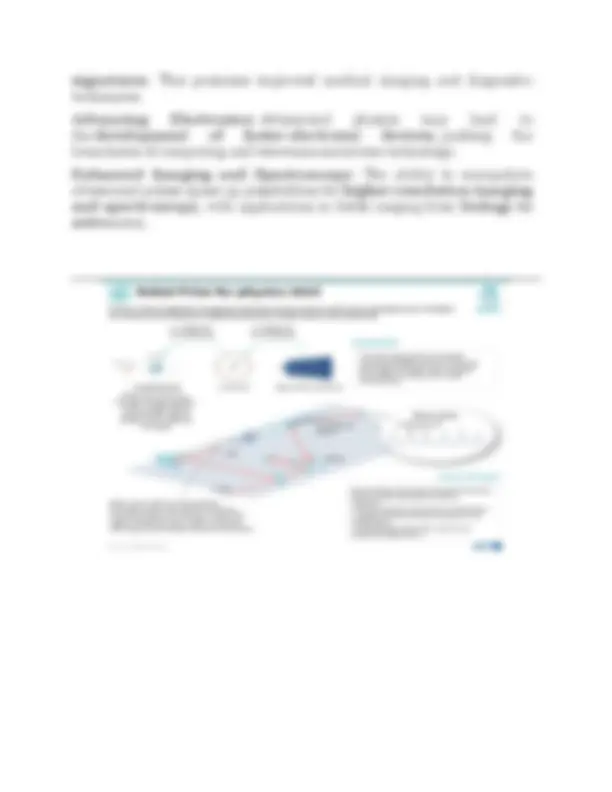




Study with the several resources on Docsity

Earn points by helping other students or get them with a premium plan


Prepare for your exams
Study with the several resources on Docsity

Earn points to download
Earn points by helping other students or get them with a premium plan
Community
Ask the community for help and clear up your study doubts
Discover the best universities in your country according to Docsity users
Free resources
Download our free guides on studying techniques, anxiety management strategies, and thesis advice from Docsity tutors
The document announces the Nobel Prize in Physics 2023 awarded to Pierre Agostini, Ferenc Krausz, and Anne L’Huillier for their research on electrons in flashes of light. electron dynamics, which refers to the study of the behavior and motion of electrons within atoms, molecules, and solid materials. The document also discusses attosecond pulses, which enable scientists to directly observe and study the rapid dynamics of electrons within matter.
Typology: Study notes
1 / 4

This page cannot be seen from the preview
Don't miss anything!



Nobel Prize 2023 in Physics awarded to Pierre Agostini, Ferenc Krausz, Anne L’Huillier for research on electrons in flashes of light. Anne L’Huillier Ferenc Krausz Pierre Agostin
Their groundbreaking work in the field of experimental physics has led to the development of attosecond pulses, scientists enabling to directly observe and study the rapid dynamics of electrons within matter. Electron Dynamics Electron dynamics refers to the study and understanding of the behavior and motion of electrons within atoms, molecules, and solid materials. It encompasses various aspects of electron behavior, including their movement, interactions with electro magenetic fields, and responses to external forces. Electrons are fundamental particles with a negative charge and they orbit the dense nucleus. For a long time, scientists had to rely on indirect methods to understand electron behavior, akin to taking a photograph of a fast-moving race car with a long exposure time resulting in a blurry image. The rapid motion of electrons rendered them nearly invisible to conventional measurement techniques. Atoms in molecules exhibit movements on the order of femtoseconds , which are incredibly short time intervals , constituting a millionth of a billionth of a second. Electrons, being lighter and interacting even faster, operate within the attosecond realm, a billionth of a billionth of a second (1×10−18 of second). Note: An attosecond pulse is an incredibly brief burst of light that lasts for attoseconds. Attosecond Pulse Generation Background : In the 1980s , physicists managed to create light pulses lasting just a few femtoseconds. At that time, it was believed that this was the shortest achievable duration for light pulses.
signatures. This promises improved medical imaging and diagnostic techniques. Advancing Electronics: Attosecond physics may lead to the development of faster electronic devices, pushing the boundaries of computing and telecommunications technology. Enhanced Imaging and Spectroscopy : The ability to manipulate attosecond pulses opens up possibilities for higher-resolution imaging and spectroscopy , with applications in fields ranging from biology to astro nomy.